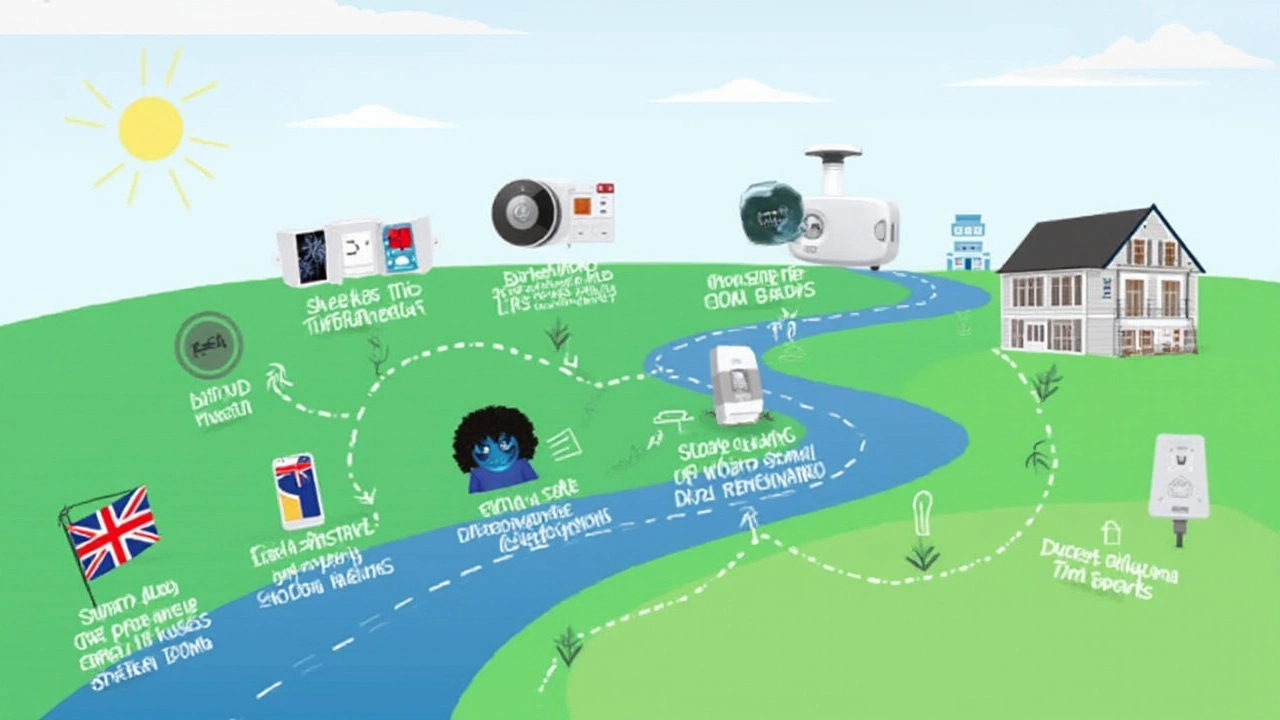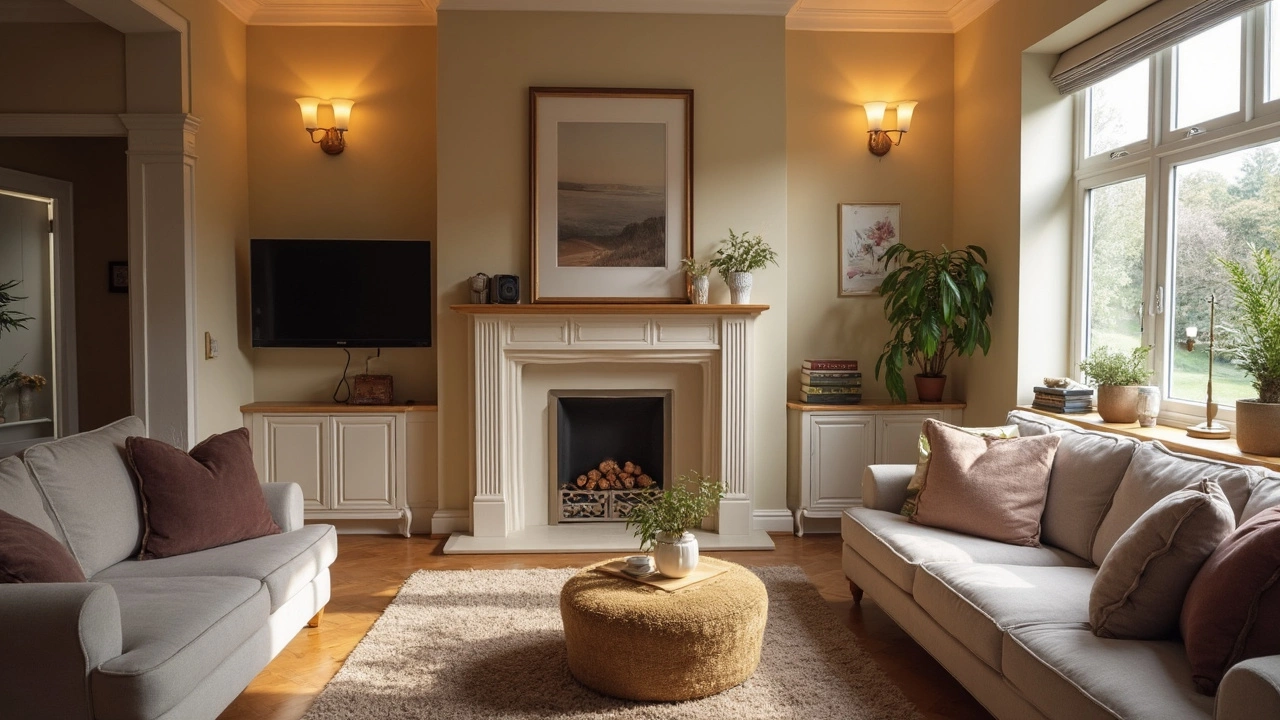Does turning your house into a smart home break the bank? Not necessarily. Sure, the idea of automating every little gadget might sound pricey initially, but you might be surprised at how much flexibility you have in managing these costs.
At the basic level, the price varies depending on how deep you want to dive into the smart world. For those just testing the waters, there are plenty of affordable entry-level smart devices—smart bulbs, smart plugs, and even some basic security cameras that don’t cost an arm and a leg.
Plus, smart homes can actually save you money in the long run. Imagine cutting your energy bills with smart thermostats or avoiding frequent coffee runs thanks to a smart coffee maker waking you up with your morning brew! The savings on utility bills alone could justify the cost of some of these devices.
- Understanding Basic Costs
- Entry-Level Smart Devices
- Potential Savings with Automation
- Long-Term Investment Benefits
- Balancing Cost and Convenience
Understanding Basic Costs
Diving into the world of smart home technology can feel like opening a floodgate of expenses, but it doesn't always have to be that way. Let's break it down.
Different Devices, Different Costs
The total cost of setting up a smart home really depends on which devices you're looking at. For instance, a smart thermostat like the Nest Learning Thermostat can set you back around $250. However, a basic smart bulb might only cost $10-20 each.
Starter Packs and Bundles
If you're just starting out, it's worth exploring starter kits or bundles, which often offer a mix of different smart devices at a reduced price. Brands like Philips Hue offer starter kits that include a set of bulbs and a hub, which can be a cost-effective way to begin your smart home journey.
Budgeting for Connectivity
One aspect often overlooked is the need for robust Wi-Fi. A strong, reliable internet connection is key for all these devices to work seamlessly. Investing in a good router might add to initial costs but can save you from future headaches.
Ongoing Costs
While upfront costs get most of the attention, don't forget about potential subscription services. Cameras might need cloud storage subscriptions, and some platforms like Amazon Alexa offer premium features for a fee.
| Device | Approximate Cost |
|---|---|
| Smart Speaker | $100 |
| Smart Camera | $150 |
| Smart Lock | $200 |
So, is it expensive? It can be, but with careful choice and planning, building a smart home doesn't mean emptying your wallet entirely. The key is to start small and expand as you understand your needs better.
Entry-Level Smart Devices
Want to dip your toes into the smart home pool without draining your wallet? Entry-level smart devices are the way to go. These gadgets can make your home feel futuristic without the high price tag.
Smart Bulbs
Smart bulbs are an easy win for newcomers to home automation. They let you control lights through your phone or voice commands with assistants like Alexa and Google Assistant. Plus, some models offer color-changing features, setting the mood just right. And the best part? You can find them for less than $20 each.
Smart Plugs
Smart plugs are the unsung heroes of affordable home automation. By plugging your lamps or appliances into these, you can control them with a tap on your phone. Forgot to turn off the iron? A smart plug can save the day!
Basic Security Cameras
Home security is crucial, but you don't need a massive system to feel safe. Entry-level security cameras are available at reasonable prices. With features like motion detection and night vision, they offer peace of mind without the hefty installation fees.
Smart Speakers
Okay, so we all know about smart speakers like Echo Dots or Google Nest Minis. They're a great starting point, offering voice assistant control, music streaming, and even handling other smart devices in your home. Sometimes you find these on sale for as low as $25!
Here's a quick look at some typical costs for these devices:
| Device Type | Approximate Cost (USD) |
|---|---|
| Smart Bulbs | $10 - $20 |
| Smart Plugs | $15 - $25 |
| Basic Security Cameras | $30 - $50 |
| Smart Speakers | $20 - $50 |
With options like these, setting up a basic smart home isn't just for tech enthusiasts or those with deep pockets. It's accessible to nearly everyone.

Potential Savings with Automation
When diving into the world of smart home technology, one of the major sell points is the potential for long-term savings. You may start with a small investment, but the return on ease and savings can make it all worthwhile.
Cutting Down on Energy Bills
One of the hefty benefits of a smart home is energy efficiency. Take smart thermostats, for example. Brands like Nest or Ecobee have shown promise in helping users save up to 15% on heating and cooling annually. How? These devices learn your schedule and preferences, adjusting temperatures when you’re not home to save energy.
Smart lighting also plays its part. Automated lights ensure you're not lighting up rooms unnecessarily. Motion sensors and timers can lead to a noticeable reduction in your electricity bill. Imagine walking into your living room, and the lights turn on as you enter and shut off when you leave—a simple, cost-effective change.
Efficient Water Usage
Another area you might not think about is water savings. Smart sprinkler systems can change how you water your garden. They adapt to weather conditions and water only when necessary, potentially saving you around 30%-50% on outdoor water use. While it doesn't apply to everyone, those of you who maintain a garden will definitely notice a difference.
Beyond Savings: Value Addition
Now, beyond direct savings, there's the argument of increasing property value. Having a home automation system can make your house more attractive to potential buyers or renters. As these technologies become standard, your smart home eventually keeps pace with market trends, ensuring you stay ahead.
All in all, setting up a small home automation ecosystem could initially seem costly. But when you weigh the potential savings and added value, it's often a wise investment.
Long-Term Investment Benefits
Thinking about the future might not be everyone's favorite thing, but when it comes to a smart home, it really pays off. Consider how much convenience it brings and how these devices might even pay for themselves over time.
Energy Efficiency
Did you know that smart thermostats can reduce energy costs by around 10-15%? By only heating or cooling your home when needed and learning your schedule, these devices cut out wasteful energy use. Add in smart lighting, and you're not just saving pennies but dollars every month.
Increased Property Value
If you're planning to sell your home someday, having it equipped with home automation can make it more appealing to tech-savvy buyers. It's like having a built-in upgrade that future-proofs your property. Realtors suggest that having smart features might give your house a competitive edge in the market.
Improved Security
Smart security cameras, doorbells, and locks contribute to your safety. While we can't put a price on safety, knowing your home is more secure and your kids are safe may offer peace of mind worth the investment. Plus, insurance companies often offer discounts for homes with certain security systems.
Reduced Maintenance Costs
You might catch small issues before they become big problems. Smart water sensors, for example, can alert you to leaks early, avoiding costly repairs. Gadgets like these can save you thousands in potential water damage.
The truth is, a smart home isn't just about flashy gadgets. With a little planning, it's a solid investment that offers real value—cutting down not just present expenses, but future ones as well.

Balancing Cost and Convenience
So, you've decided on jumping onto the smart home bandwagon, but you're cautious about not going overboard. Finding the right balance between cost and convenience is key. Gotta keep those bank accounts happy, right?
First thing, prioritize. Not all devices are made equal in terms of home automation. If you're frequently forgetting to turn off lights, start with smart bulbs and switches. They're often the entry-level heroes for enhancing convenience without draining your wallet.
Next, consider packages. Companies offer bundled deals that make getting multiple smart devices a lot more economical than buying them individually. You might snag a deal like a smart hub with free smart bulbs or a complimentary smart plug.
Smart Device ROI
Let's talk about the return on investment, or ROI. While an initial splurge may be required, the convenience and cost savings often make these devices worthwhile. For instance, a smart thermostat can reduce energy bills by up to 10-15%. Investing here means more comfort with fewer dollars spent on heating and cooling.
Avoid Unnecessary Bells and Whistles
It's tempting to get the latest tech, but ask yourself, do you need a voice-controlled fridge? Focus on home automation that genuinely adds value to your life. Features that simplify daily tasks or improve energy efficiency tend to offer the best balance.
For a quick look, here's a simple breakdown of where some cost-effective decisions can be made for potential monthly savings:
| Device Type | Potential Monthly Savings |
|---|---|
| Smart Thermostat | $20-30 |
| Smart Bulbs | $5-10 |
| Smart Plugs | $2-5 |
At the end of the day, creating a financially sustainable yet convenient smart home is totally doable. Just think twice before adding that smart pillow—might not be as crucial as expected!

